Radiation spectra of laser-driven quantum relativistic electrons
- 格式:pdf
- 大小:592.53 KB
- 文档页数:30
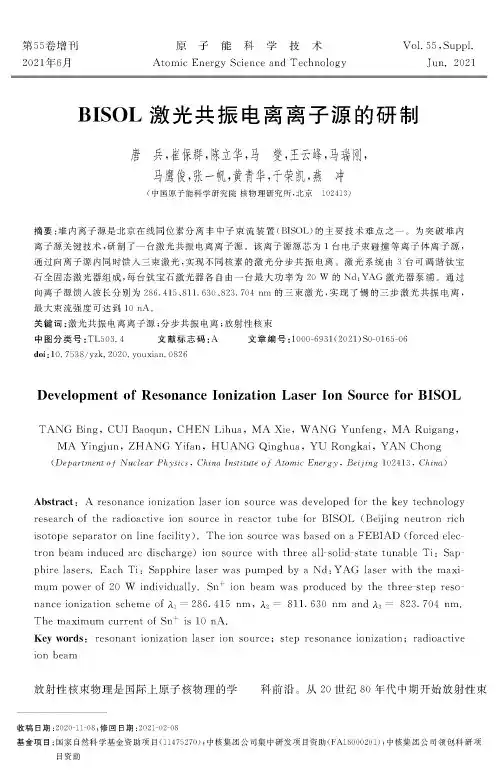
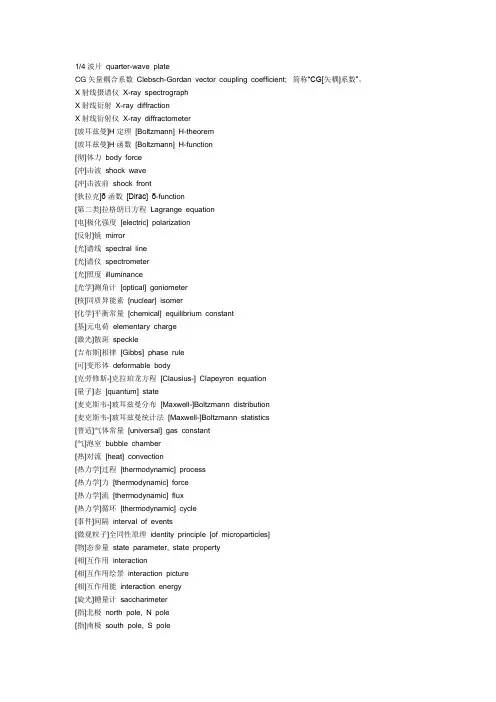
1/4波片quarter-wave plateCG矢量耦合系数Clebsch-Gordan vector coupling coefficient; 简称“CG[矢耦]系数”。
X射线摄谱仪X-ray spectrographX射线衍射X-ray diffractionX射线衍射仪X-ray diffractometer[玻耳兹曼]H定理[Boltzmann] H-theorem[玻耳兹曼]H函数[Boltzmann] H-function[彻]体力body force[冲]击波shock wave[冲]击波前shock front[狄拉克]δ函数[Dirac] δ-function[第二类]拉格朗日方程Lagrange equation[电]极化强度[electric] polarization[反射]镜mirror[光]谱线spectral line[光]谱仪spectrometer[光]照度illuminance[光学]测角计[optical] goniometer[核]同质异能素[nuclear] isomer[化学]平衡常量[chemical] equilibrium constant[基]元电荷elementary charge[激光]散斑speckle[吉布斯]相律[Gibbs] phase rule[可]变形体deformable body[克劳修斯-]克拉珀龙方程[Clausius-] Clapeyron equation[量子]态[quantum] state[麦克斯韦-]玻耳兹曼分布[Maxwell-]Boltzmann distribution[麦克斯韦-]玻耳兹曼统计法[Maxwell-]Boltzmann statistics[普适]气体常量[universal] gas constant[气]泡室bubble chamber[热]对流[heat] convection[热力学]过程[thermodynamic] process[热力学]力[thermodynamic] force[热力学]流[thermodynamic] flux[热力学]循环[thermodynamic] cycle[事件]间隔interval of events[微观粒子]全同性原理identity principle [of microparticles][物]态参量state parameter, state property[相]互作用interaction[相]互作用绘景interaction picture[相]互作用能interaction energy[旋光]糖量计saccharimeter[指]北极north pole, N pole[指]南极south pole, S pole[主]光轴[principal] optical axis[转动]瞬心instantaneous centre [of rotation][转动]瞬轴instantaneous axis [of rotation]t 分布student's t distributiont 检验student's t testK俘获K-captureS矩阵S-matrixWKB近似WKB approximationX射线X-rayΓ空间Γ-spaceα粒子α-particleα射线α-rayα衰变α-decayβ射线β-rayβ衰变β-decayγ矩阵γ-matrixγ射线γ-rayγ衰变γ-decayλ相变λ-transitionμ空间μ-spaceχ 分布chi square distributionχ 检验chi square test阿贝不变量Abbe invariant阿贝成象原理Abbe principle of image formation阿贝折射计Abbe refractometer阿贝正弦条件Abbe sine condition阿伏伽德罗常量Avogadro constant阿伏伽德罗定律Avogadro law阿基米德原理Archimedes principle阿特伍德机Atwood machine艾里斑Airy disk爱因斯坦-斯莫卢霍夫斯基理论Einstein-Smoluchowski theory 爱因斯坦场方程Einstein field equation爱因斯坦等效原理Einstein equivalence principle爱因斯坦关系Einstein relation爱因斯坦求和约定Einstein summation convention爱因斯坦同步Einstein synchronization爱因斯坦系数Einstein coefficient安[培]匝数ampere-turns安培[分子电流]假说Ampere hypothesis安培定律Ampere law安培环路定理Ampere circuital theorem安培计ammeter安培力Ampere force安培天平Ampere balance昂萨格倒易关系Onsager reciprocal relation凹面光栅concave grating凹面镜concave mirror凹透镜concave lens奥温电桥Owen bridge巴比涅补偿器Babinet compensator巴耳末系Balmer series白光white light摆pendulum板极plate伴线satellite line半波片halfwave plate半波损失half-wave loss半波天线half-wave antenna半导体semiconductor半导体激光器semiconductor laser半衰期half life period半透[明]膜semi-transparent film半影penumbra半周期带half-period zone傍轴近似paraxial approximation傍轴区paraxial region傍轴条件paraxial condition薄膜干涉film interference薄膜光学film optics薄透镜thin lens保守力conservative force保守系conservative system饱和saturation饱和磁化强度saturation magnetization本底background本体瞬心迹polhode本影umbra本征函数eigenfunction本征频率eigenfrequency本征矢[量] eigenvector本征振荡eigen oscillation本征振动eigenvibration本征值eigenvalue本征值方程eigenvalue equation比长仪comparator比荷specific charge; 又称“荷质比(charge-mass ratio)”。
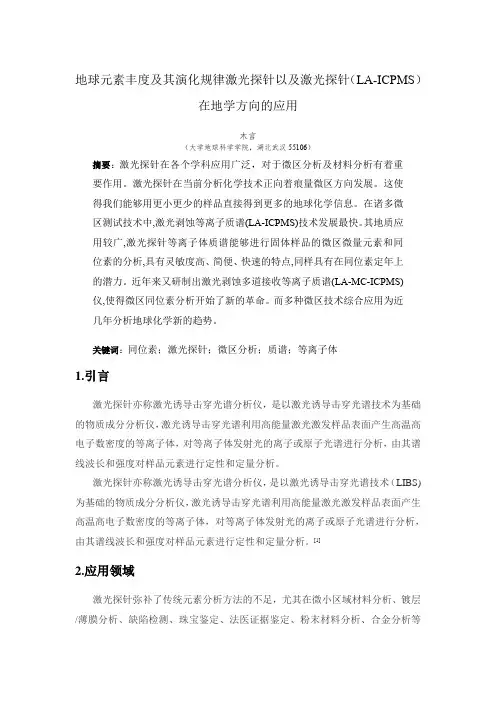
地球元素丰度及其演化规律激光探针以及激光探针(LA-ICPMS)在地学方向的应用木言(大学地球科学学院,湖北武汉55106)摘要:激光探针在各个学科应用广泛,对于微区分析及材料分析有着重要作用。
激光探针在当前分析化学技术正向着痕量微区方向发展。
这使得我们能够用更小更少的样品直接得到更多的地球化学信息。
在诸多微区测试技术中,激光剥蚀等离子质谱(LA-ICPMS)技术发展最快。
其地质应用较广,激光探针等离子体质谱能够进行固体样品的微区微量元素和同位素的分析,具有灵敏度高、简便、快速的特点,同样具有在同位素定年上的潜力。
近年来又研制出激光剥蚀多道接收等离子质谱(LA-MC-ICPMS)仪,使得微区同位素分析开始了新的革命。
而多种微区技术综合应用为近几年分析地球化学新的趋势。
关键词:同位素;激光探针;微区分析;质谱;等离子体1.引言激光探针亦称激光诱导击穿光谱分析仪,是以激光诱导击穿光谱技术为基础的物质成分分析仪,激光诱导击穿光谱利用高能量激光激发样品表面产生高温高电子数密度的等离子体,对等离子体发射光的离子或原子光谱进行分析,由其谱线波长和强度对样品元素进行定性和定量分析。
激光探针亦称激光诱导击穿光谱分析仪,是以激光诱导击穿光谱技术(LIBS)为基础的物质成分分析仪,激光诱导击穿光谱利用高能量激光激发样品表面产生高温高电子数密度的等离子体,对等离子体发射光的离子或原子光谱进行分析,由其谱线波长和强度对样品元素进行定性和定量分析。
[1]2.应用领域激光探针弥补了传统元素分析方法的不足,尤其在微小区域材料分析、镀层/薄膜分析、缺陷检测、珠宝鉴定、法医证据鉴定、粉末材料分析、合金分析等应用领域优势明显,同时,还可以广泛适用于地质、煤炭、冶金、制药、环境、科研等不同领域的应用。
3.产品特点与其他常用元素分析的方法相比,激光探针主要优点有:[2](1)利用激光特有的性能,可实现远程、实时、在线元素检测。
(2)仪器体积相对较小,适用于现场分析、可在恶劣条件下进行测定。

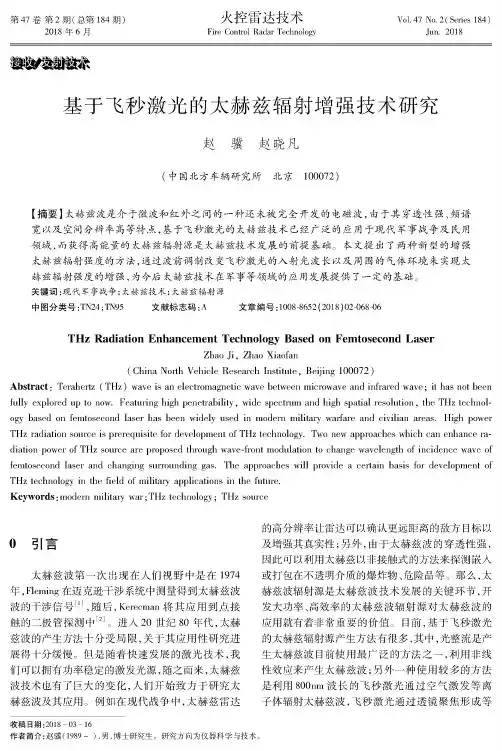
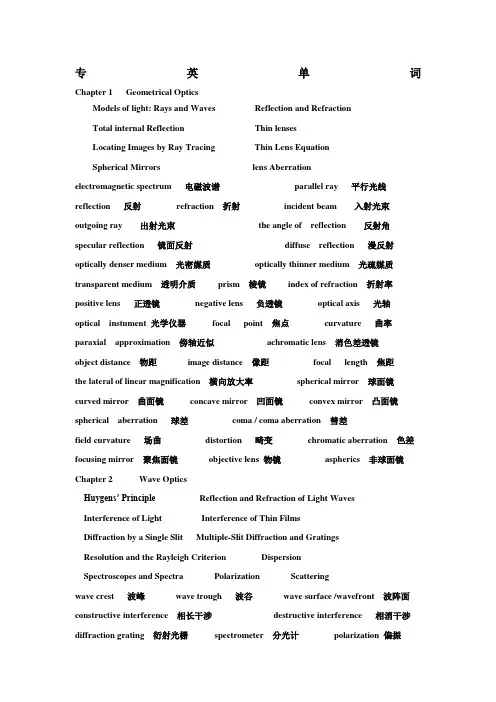
专英单词Chapter 1 Geometrical OpticsModels of light: Rays and Waves Reflection and RefractionTotal internal Reflection Thin lensesLocating Images by Ray Tracing Thin Lens EquationSpherical Mirrors lens Aberrationelectromagnetic spectrum 电磁波谱parallel ray 平行光线reflection 反射refraction 折射incident beam 入射光束outgoing ray 出射光束the angle of reflection 反射角specular reflection 镜面反射diffuse reflection 漫反射optically denser medium 光密媒质optically thinner medium 光疏媒质transparent medium 透明介质prism 棱镜index of refraction 折射率positive lens 正透镜negative lens 负透镜optical axis 光轴optical instument 光学仪器focal point 焦点curvature 曲率paraxial approximation 傍轴近似achromatic lens 消色差透镜object distance 物距image distance 像距focal length 焦距the lateral of linear magnification 横向放大率spherical mirror 球面镜curved mirror 曲面镜concave mirror 凹面镜convex mirror 凸面镜spherical aberration 球差coma / coma aberration 彗差field curvature 场曲distortion 畸变chromatic aberration 色差focusing mirror 聚焦面镜objective lens 物镜aspherics 非球面镜Chapter 2 Wave OpticsHuygens’ Principle Reflection and Refraction of Light WavesInterference of Light Interference of Thin FilmsDiffraction by a Single Slit Multiple-Slit Diffraction and GratingsResolution and the Rayleigh Criterion DispersionSpectroscopes and Spectra Polarization Scatteringwave crest 波峰wave trough 波谷wave surface /wavefront 波阵面constructive interference 相长干涉destructive interference 相消干涉diffraction grating 衍射光栅spectrometer 分光计polarization 偏振Rayleigh scattering 瑞利散射optical activity 旋光性aperture 孔径half wave loss 半波损失fringes of equal inclination 等倾条纹fringes of equal thickness 等厚条纹diffraction grating 衍射光栅multiple-beam interference 多光束干涉resolution 分辨率wavefront splitting interference 分波前干涉diffraction aperture 衍射孔径amplitude splitting interference 分振幅干wave velocity 波速spectroscope 分光镜longitudinal wave 纵波transverse wave 横波Chapter 3 Optical InstrumentsThe eye The Magnifying GlassCameras and Projectors Compound MicroscopesTelescope Other lensesPupil 瞳孔Cornea 角膜Lens 晶状体Retina 视网膜near point 近点far point 远点Astigmatism 散光Myopia nearsightedness 近视hyperopia farsightedness 远视zoom lens 变焦透镜varifocal lens 变焦距镜头Magnifying glass 放大镜Chapter 4 Principles of LasersLaser Principle Types of LasersControl of The Laser Outputtransition 跃迁spontaneous emission 自发辐射excited state 激发态stimulated emission 受激辐射ground state 基态LASER —Light Amplification by Stimulated Emission of Radiationresonant cavity 谐振腔pumped light 泵浦光;抽运光population inversion 粒子数反转population distribution 粒子数分布bandwidth 带宽wavetrain 波列gain 增益etalon 标准具feedback 反馈threshold 阈值multimode 多模ring resonator 环形谐振腔stable and unstable resonators 稳定腔和非稳腔the confocal resonator 共焦腔Semiconductor Lasers 半导体激光器Solid State Lasers 固体激光器Fiber laser 光纤激光器Ion and Atomic Lasers 离子及原子激光器Excimer laser 准分子激光器Electro-ionization Laser 电致电离激光器Plasma Laser 等离子体激光器Q-SwitchingModulation of the Laser OutputMode Locking for Ultrashort PulsesQ switch Q 开关;调Q birefringence 双折射isolator 隔离器piezo-electric crystal 压电晶体quarter wave plate ? 波片harmonic wave 谐波Acousto-optic modulation 声光调制Magneto-optic modulation 磁光调制electro-optic modulation 电光调制SPM Self-phase Modulation 自相位调制PCM Pulse Code Modulation 脉冲编码调制active mode locking 主动锁模passive mode locking 被动锁模Laser Manufacturing Technology Laser RadarLasers in MedicineLaser Welding 激光焊接Laser Heat Treatment 激光热处理Laser Cutting 激光切割Laser Marking 激光打标Laser Drilling 激光打孔arc welding 电弧焊Laser Heat-Conduction Welding 激光热传导焊接Laser Deep Penetration Welding 激光深熔焊接laser cladding technology 激光熔覆技术Laser Texturing Technology 激光毛化技术Chapter optical communicationcontinuous wave 连续波transverse electric mode 横电模transverse magnetic mode 横磁模core 纤芯cladding 包层SBS stimulated Brillouin Scattering 受激布里渊散射SRS stimulated Raman scattering 受激拉曼散射Multimode Fiber 多模光纤Single Mode Fiber 单模光纤SIOF Step-Index Optical Fiber 阶跃折射率分布光纤GIOF Graded-Index Optical Fiber 渐变折射率分布光纤GVD Group Velocity Dispersion 群速度色散PMD Polarisation Mode Dispersion 偏振模色散Waveguide dispersion 波导色散Material dispersion 材料色散FDM frequency division multiplexing 频分复用TDM Time Division Multiplexing 时分复用WDM Wavelength Division Multiplexing 波分复用DWDM Dense Wavelength Division Multiplexing 密集波分复用LED light emitting diode 发光二极管LD laser diode 激光二极管APD Avalanche photo Diode 雪崩光电二极管OFA Optical Fiber Amplifier 光纤放大器SLA/SOA semiconductor laser/optical amplifier 半导体光放大器preamplifer 前置放大器active component 有源器件attenuator 衰减器Transmitter 发射机low pass filter 低通滤波器isolator 隔离器Optical Circulator 光环行器Optical switch 光开关Passive component 无源器件ADM Add Drop Multiplexer 分插复用器AWG arrayed-waveguide grating 阵列波导光栅Ethernet 以太网Internet of Things 物联网AON Active Optical Network 有源光网络PON Passive Optical Network 无源光网络PDH Plesiochronous Digital Hierarchy 准同步数字体系SDH Synchronous Digital Hierarchy 同步数字传输体系Chapter Holographyreconstruction 再现development 显影photosensitive medium 感光介质Optical Date Storage 光数据存储。
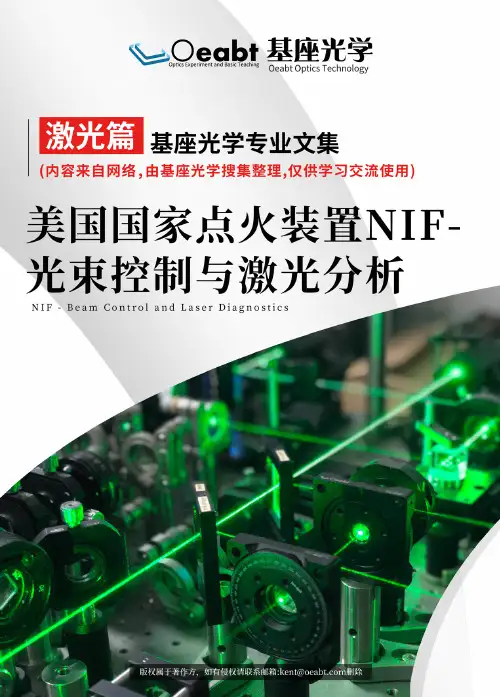
DISCLAIMERThis document was prepared as an account of work sponsored by an agency of the United States Government. Neither the United States Government nor the University of California nor any of their employees, makes any warranty, express or implied, or assumes any legal liability or responsibility for the accuracy, completeness, or usefulness of any information, apparatus, product, or process disclosed, or represents that its use would not infringe privately owned rights. Reference herein to any specific commercial product, process, or service by trade name, trademark, manufacturer, or otherwise, does not necessarily constitute or imply its endorsement, recommendation, or favoring by the United States Government or the University of California. The views and opinions of authors expressed herein do not necessarily state or reflect those of the United States Government or the University of California, and shall not be used for advertising or product endorsement purposes.This report has been reproduceddirectly from the best available copy.Available to DOE and DOE contractors from theOffice of Scientific and Technical InformationP.O. Box 62, Oak Ridge, TN 37831Prices available from (615) 576-8401, FTS 626-8401Available to the public from theNational Technical Information ServiceU.S. Department of Commerce5285 Port Royal Rd.,Springfield, VA 22161University of California • Livermore, California 94551 Technical Information Department• Lawrence Livermore National Laboratory。
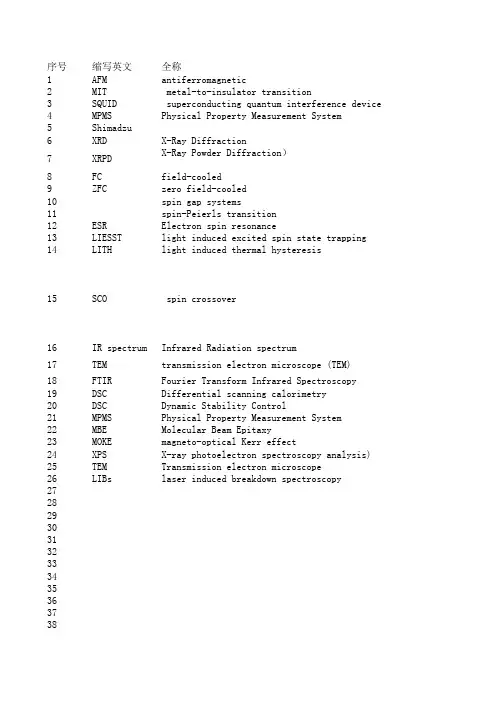
序号缩写英文全称1AFM antiferromagnetic2MIT metal-to-insulator transition3SQUID superconducting quantum interference device 4MPMS Physical Property Measurement System5Shimadzu6XRD X-Ray DiffractionX-Ray Powder Diffraction)7XRPD8FC field-cooled9ZFC zero field-cooled10spin gap systems11spin-Peierls transition12ESR Electron spin resonance13LIESST light induced excited spin state trapping14LITH light induced thermal hysteresis15SCO spin crossover16IR spectrum Infrared Radiation spectrum17TEM transmission electron microscope (TEM)18FTIR Fourier Transform Infrared Spectroscopy19DSC Differential scanning calorimetry20DSC Dynamic Stability Control21MPMS Physical Property Measurement System22MBE Molecular Beam Epitaxy23MOKE magneto-optical Kerr effect24XPS X-ray photoelectron spectroscopy analysis)25TEM Transmission electron microscope26LIBs laser induced breakdown spectroscopy27282930313233343536373839中文意思具体意思反铁磁的金属和绝缘体之间的转换量子扰动超导探测器磁学测量系统分光光度计X射线衍射X射线粉末衍射加场冷却零场冷却自旋能隙系统派尔斯自旋跃迁电子自旋共振光致激发自旋俘获光致热磁滞现象自旋交叉自旋交叉是第一行d—金属(第三周期电子结构为d4-d7过渡金属)配合物在一定条件的作用下由高自旋转换为低自旋,或者由低自旋转换为高自旋。

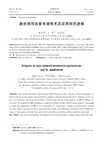
第6卷 第4期2013年8月 中国光学 Chinese Optics Vol.6 No.4Aug.2013 收稿日期:2013⁃04⁃11;修订日期:2013⁃06⁃13 基金项目:国家自然科学基金面上项目(No.31270680,No.61076064);江苏省“六大高峰人才”资助项目(No.2011⁃XCL⁃018);江苏高校优势学科建设工程资助项目文章编号 1674⁃2915(2013)04⁃0490⁃11激光诱导击穿光谱技术及应用研究进展侯冠宇1,王 平1∗,佟存柱2(1.南京林业大学化学工程学院,江苏南京210037;2.中国科学院长春光学精密机械与物理研究所发光学及应用国家重点实验室,吉林长春130033)摘要:激光诱导击穿光谱(LIBS)技术是一种基于原子发射光谱学的元素定性、定量检测手段。
本文介绍了LIBS 技术的原理、应用方式、检测元素种类及检测极限;综述了该项技术在固体、液体、气体组分检测方面的技术发展,以及在环境检测、食品安全、生物医药、材料、军事、太空领域的应用进展。
最后,提出了高功率、高稳定的激光光源和准确的定量分析方法是LIBS 技术目前所面临的问题和挑战。
关 键 词:激光诱导击穿光谱;激光产生等离子体;元素分析;检测限中图分类号:O433.54;O657.319 文献标识码:A doi:10.3788/CO.20130604.0490Progress in laser⁃induced breakdown spectroscopyand its applicationsHOU Guan⁃yu 1,WANG Ping 1∗,TONG Cun⁃zhu 2(1.College of Chemical Engineering ,Nanjing Forestry University ,Nanjing 210037,China ;2.State Key Laboratory of Luminescence and Applications ,Changchun Institute of Optics ,Fine Mechanics and Physics ,Chinese Academy of Sciences ,Changchun 130033,China )∗Corresponding author ,E⁃mail :wp_lh@ Abstract :Laser⁃induced Breakdown Spectroscopy(LIBS)based on atomic emission spectral technology is a kind of convenient and sensitive approach for the qualitative and quantitative detection of elements.In this pa⁃per,the mechanism,detecting element types,detection limit and the recent progress of LIBS technology are reviewed.The progress of LIBS technology in component testing for solid,liquid and gas samples is expoundedin detail.The applications of LIBS in the environment test,food security,biological and medicines,material sciences,military and space fields are also presented.Finally,the challenges and problems for the LIBS tech⁃nology in high power and stable laser sources and accurately quantitative analysis method are discussed.Key words :laser⁃induced breakdown spectroscopy;laser⁃induced plasmon,element analysis;detection limit1 引 言 激光诱导击穿光谱(Laser⁃Induced Breakdown Spectroscopy,简称LIBS)技术是利用激光照射被测物体表面产生等离子体[1⁃2],通过检测等离子体光谱而获取物质成分和浓度的分析技术。
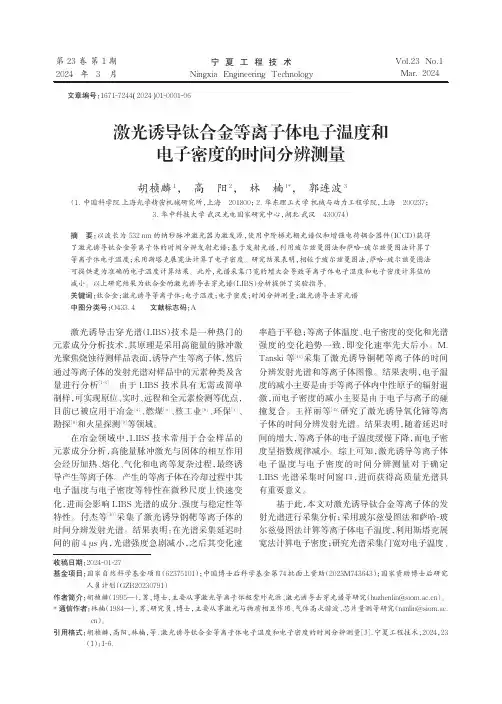
第23 卷第 1 期2024 年 3 月宁夏工程技术Vol.23 No.1 Ningxia Engineering Technology Mar. 2024激光诱导钛合金等离子体电子温度和电子密度的时间分辨测量胡桢麟1,高阳2,林楠1*,郭连波3(1.中国科学院上海光学精密机械研究所,上海201800; 2.华东理工大学机械与动力工程学院,上海200237;3.华中科技大学武汉光电国家研究中心,湖北武汉430074)摘要:以波长为532 nm的纳秒脉冲激光器为激发源,使用中阶梯光栅光谱仪和增强电荷耦合器件(ICCD)获得了激光诱导钛合金等离子体的时间分辨发射光谱;基于发射光谱,利用玻尔兹曼图法和萨哈-玻尔兹曼图法计算了等离子体电子温度;采用斯塔克展宽法计算了电子密度。
研究结果表明,相较于玻尔兹曼图法,萨哈-玻尔兹曼图法可提供更为准确的电子温度计算结果。
此外,光谱采集门宽的增大会导致等离子体电子温度和电子密度计算值的减小。
以上研究结果为钛合金的激光诱导击穿光谱(LIBS)分析提供了实验指导。
关键词:钛合金;激光诱导等离子体;电子温度;电子密度;时间分辨测量;激光诱导击穿光谱中图分类号:O433.4 文献标志码:A激光诱导击穿光谱(LIBS)技术是一种热门的元素成分分析技术,其原理是采用高能量的脉冲激光聚焦烧蚀待测样品表面,诱导产生等离子体,然后通过等离子体的发射光谱对样品中的元素种类及含量进行分析[1-3]。
由于LIBS技术具有无需或简单制样,可实现原位、实时、远程和全元素检测等优点,目前已被应用于冶金[4]、燃煤[5]、核工业[6]、环保[7]、勘探[8]和火星探测[9]等领域。
在冶金领域中,LIBS技术常用于合金样品的元素成分分析,高能量脉冲激光与固体的相互作用会经历加热、熔化、气化和电离等复杂过程,最终诱导产生等离子体。
产生的等离子体在冷却过程中其电子温度与电子密度等特性在微秒尺度上快速变化,进而会影响LIBS光谱的成分、强度与稳定性等特性。
利用微动法快速探测岩溶塌陷区覆盖层厚度张伟;甘伏平;梁东辉;韩凯;刘伟【摘要】In order to obtain the thickness of the overburden layer in large scale of the typical area of karst collapse, we used microtremor method to make field investigation in the typical area of karst collapse of Dongquan commune in Liucheng County, Liuzhou City, and made microtremor observation on the known 56 boreholes in survey area to extract the characteristic frequency. Based on the drilling data, we derive a function "h = 62. 5/f", which reveals the relationship between the overburden layer thickness and the characteristic frequency. We use this function and the characteristic frequency from the measured data to in-verse the overburden layer thickness. The results show that this method, with initial success in practice and high adaptability, proves to be efficient, economic, recommendable and highly applicable in exploration of overburdern layer thickness in large scale of karst collapse area. Combined with geological information, it can be applied to do a simple and quick evaluation for the area prone to karst collapse.%为了能在大尺度范围内获得岩溶塌陷典型调查区覆盖层的厚度,采用微动法对柳州市柳城县东泉公社幅岩溶塌陷重点调查区进行了野外观测,并对调查区内已知的56处钻孔进行微动观测,提取特征频率,结合钻孔资料得出覆盖层厚度与特征频率的函数关系满足h =62.5/f。
基于LIPS检测铬铁碳含量时影响因素的分析摘要利用聚焦的强激光束入射物体表面产生激光等离子体,对等离子体中原子和离子发射谱进行元素分析叫做激光诱导等离子体光谱法(Laser-induced plasma spectroscopy),简称LIPS。
由于LIPS测量方法具有许多优点,如不需对样品进行预处理,快速、无损检测,高灵敏度,可以对固体、液体、气体中的悬浮颗粒等进行实时的现场检测,所以这种方法逐渐成为化学分析的一种重要方法。
影响分析检测的主要因素有激光的能量密度,激光的波长,激光脉冲宽度,样品的物理化学性质,以及周围环境气体的性质和压力等的影响。
关键字激光诱导等离子体光谱法(LIPS) 碳元素含量光谱仪影响因素1引言激光诱导等离子体光谱法(LIPS)是基于高强度的脉冲激光与材料相互作用,产生等离子体,对等离子体辐射的光谱分析,获得被测物质的成分和含量,适用于固体、液体和气体样品。
脉冲激光束(脉宽纳秒量级,单脉冲能量几十毫焦)经透镜聚焦后作用于样品表面,能量密度达到GW/2cm以上,辐照处物质蒸发、气化后形成稠密的等离子体,等离子体一般能持续几十微秒后衰减消失。
激光诱导等离子体光谱法装置简便,样品无需预处理,发射一次脉冲能同时测量多种元素,可以实现快速的在线分析,大大提高生产效率,以及实现有毒、强辐射等恶劣环境下远距离、非接触性探测分析。
LIPS 的应用领域非常广泛,在环境保护,地质矿藏勘探,核燃料分析处理钢铁冶金,考古,海洋等领域都有广泛的应用。
2 LIPS的装置与实验结果2.1 LIPS的典型装置典型的LIP S光谱探测系统主要由激光光源、光束传输系统、分光系统、信号接收系统、时序控制系统和计算机等组成。
系统架构示意图如图1所示。
该系统的工作原理为:脉冲激光器输出的脉冲光束经聚焦透镜聚焦到样品表面,样品被烧蚀、蒸发、激发和离化后在样品表面形成高温、高压、高电子密度的等离子体的火花,辐射出包含原子和离子特征谱线的光谱;将等离子体光谱通过光纤导入到分光系统,分光系统后面的信号接收系统采集信号,将光信号转化成电信号输出;经数据处理电路进行滤波、放大、A/D转换、存储等处理过程,然后送入计算机进一步处理。
第49卷第11期V ol.49N o.ll红外与激光工程Infrared and Laser Engineering2020年11月Nov. 2020绿光泵浦的黄光波段可调谐窄线宽光学参量振荡器张鹏泉\项铁铭”,史屹君2(1.杭州电子科技大学电子信息学院,浙江杭州310018;2.天津可宏振星科技有限公司,天津300192)摘要:为实现波长可调谐的窄线宽黄光波段激光输出,设计搭建了以倍频声光调QNd:YAG激光器 的532 nm脉冲绿光输出为泵浦源、以II类相位匹配磷酸钛氧钾(KTP)晶体为非线性介质的折叠腔光 学参量振荡器(OPO)。
首先产生腔内振荡的近红外可调谐闲频光,在此基础上基于LBO晶体I类非 临界相位匹配方式对OPO的闲频光进行内腔倍频,得到波长调谐范围587.2〜595.2 nm的黄光波段输 出。
为改善OPO光谱特性,在OPO闲频光谐振腔内插入熔融石英标准具,有效压缩了 OPO输出黄光 的光谱线宽。
绿光泵浦源脉冲重复频率10 kHz、平均功率24.0 W下在波长591.2 nm处获得了最高黄 光输出功率2.89 W,光束质量因子A/2=3.4,从532 nm泵浦光到黄光输出的转换效率为12.0%,脉冲宽 度37 ns,对应峰值功率7.8 kW。
此时黄光光谱半高全宽为0.15 nm,相比未在OPO腔内插入标准具自 由运转状态下的光谱得到明显改善。
关键词:光学参量振荡器;可调谐激光;窄线宽激光中图分类号:TN248.1 文献标志码:A DOI:10.3788/IRLA20200275Green pumped yellow wavelength tunable narrow linewidthoptical parametric oscillatorZhang Pengquan1,Xiang Tieming1*,Shi Yijun2(1. School of Electronics and Information, Hangzhou Dianzi University, Hangzhou 310018, China;2. Tianjin Bright Star Technology Co., LTD, Tianjin 300192, China)Abstract:A pulsed optical parametric oscillator(OPO)was demonstrated for the purpose of wavelength-tunable yellow output with narrow spectral line width.The OPO pumped by the green output of an acousto-optic Q-switched Nd:YAG used a type II phase-matched KTi0P04(KTP)crystal as the nonlinear gain medium and a folded cavity arrangement.The OPO was designed to have the idler wave tunable in near infrared oscillated in the cavity,which was further frequency doubled to generate the wavelength-tunable yellow output by using a LiB305(LBO)crystal with type I non-critical phase matching scheme.A fused silica etalon was inserted in the idler wave cavity to narrow the idler wave and the resultant yellow spectral line width.The wavelength of the yellow output obtained could be tuned over587.2-595.2 nm,within which the maximum average output power of 2.89 W was obtained at 591.2 nm,under an incident average green pump power of24.0 W.The beam quality factor M2was 3.4.The conversion efficiency from the green pump to the yellow output was 12.0%. The pulse width at the maximum output power was37 ns,and the peak power was 7.8 kW.The spectral line width of the yellow output was0.15 nm,which was narrowed effectively compared with that without etalon in the OPO cavity. Key words:optical parametric oscillator;tunable laser;narrow linewidth laser收稿日期:2020-06-15;修订日期:2020-07-11作者简介:张鹏泉(1976-),男,正高级工程师,硕士,主要从事光电信号探测和对抗方向的研究工作。
第49卷第S1期红外与激光工程2020年7月Vol.49No.S1Infrared and Laser Engineering Jul.2020双波长蓝光LD抽运Pr:YLF晶体倍频261nm紫外激光器陈晴1*,浦双双1,牛娜1,周阳1,郑权1,2(1.长春新产业光电技术有限公司,吉林长春130012;2.中国科学院长春光学精密机械与物理研究所,吉林长春130033)摘要:利用不同波长的蓝光激光二极管,采用不同方式抽运掺镨氟化钇锂(Pr:YLF)晶体,利用I类相位匹配的偏硼酸钡(BBO)为倍频晶体,腔内倍频产生中心波长为261.37nm连续紫外激光器。
采用V型折叠腔结构,利用两支不同波长的蓝光激光二极管(444nm和469nm)单独泵浦晶体,经过优化,将两支蓝光激光二极管合光后作为抽运源,增大泵浦功率的同时,保留了Pr:YLF晶体对其高的偏振吸收效率。
Pr:YLF晶体的长度为5mm,掺杂浓度为0.5%,在抽运光功率为2800mW时获得了最大输出功率245mW的连续紫外261.37nm激光器,光光转换效率约为8.75%。
关键词:激光器;紫外激光器;掺镨氟化钇锂晶体;双波长泵浦中图分类号:TN248.1文献标志码:A DOI:10.3788/IRLA20200090261nm frequency-doubling UV laser in bi-wavelength blue laserdiode pumped Pr:YLF crystalChen Qing1*,Pu Shuangshuang1,Niu Na1,Zhou Yang1,Zheng Quan1,2(1.Changchun New Industries Optoelectronics Technology Co.,Ltd,Changchun130012,China;2.Changchun Institute of Optics,Fine Mechanics and Physics,Chinese Academy of Sciences,Changchun130033,China)Abstract:The phase matching BBO was utilized as a frequency-doubling crystal to produce continuous ultraviolet laser with a central wavelength of261.37nm and the blue laser diodes with different wavelengths were used to pump the Pr:YLF in different ways.Two different wavelength blue laser diodes (444nm and469nm)were used to pump Pr:YLF separately with V-shaped folded cavity structure.The two blue laser diodes were combined as the pumping source to increase the pumping power while retaining the high polarization absorption efficiency of Pr:YLF crystal after optimization.The length of Pr:YLF crystal was5mm,the doping concentration was0.5%.Continuous261.37nm ultraviolet laser output with the maximum output power of245mW was obtained when the pumping power was2800mW.The optical-to-optical efficiency was about8.75%.Key words:laser;ultraviolet laser;Pr:YLF crystal;two wavelength pump收稿日期:2020-05-11;修订日期:2020-06-21基金项目:吉林省科技发展计划(20170203013GX)作者简介:陈晴(1991-),女,助理工程师,硕士,主要从事固体激光器方面的研究。